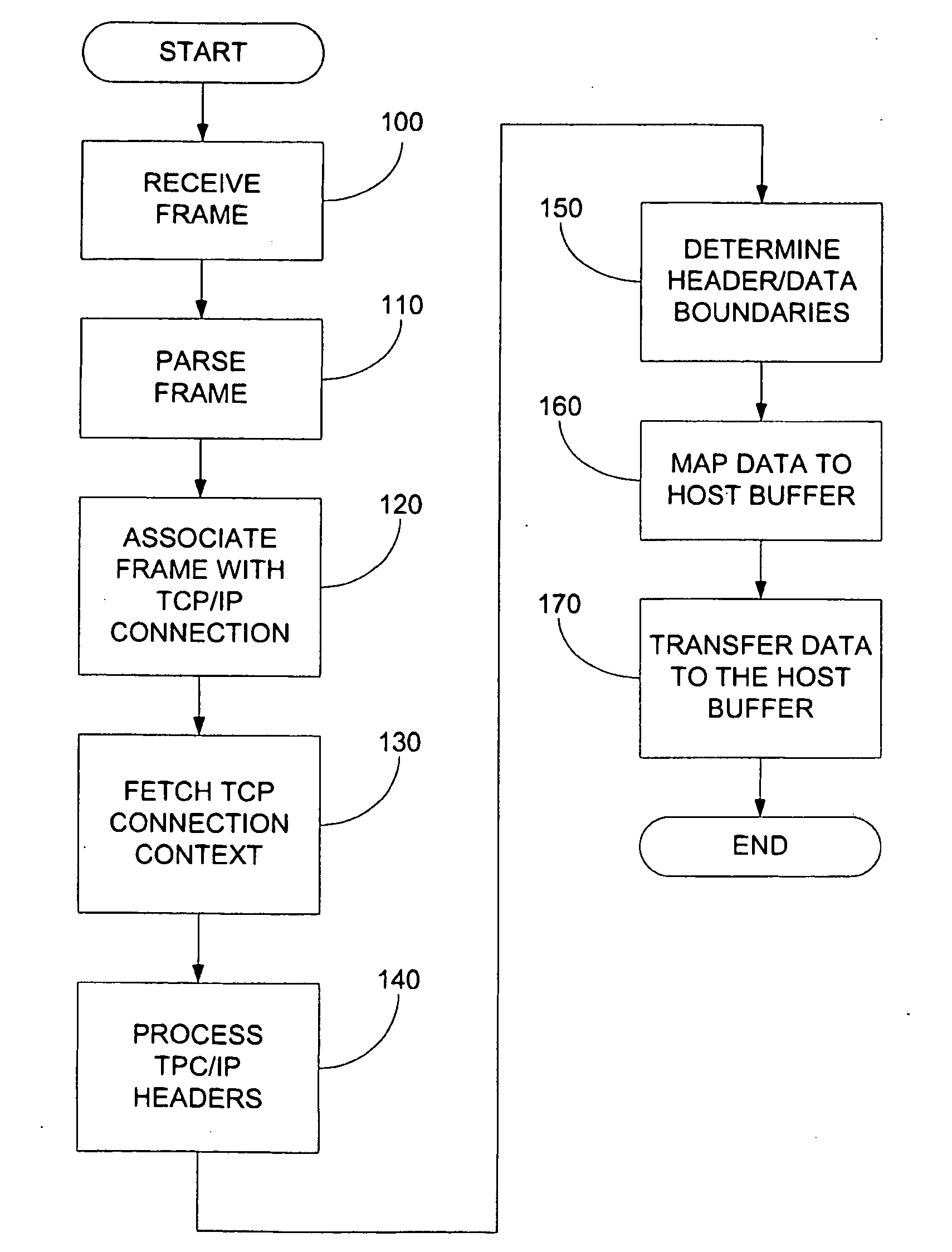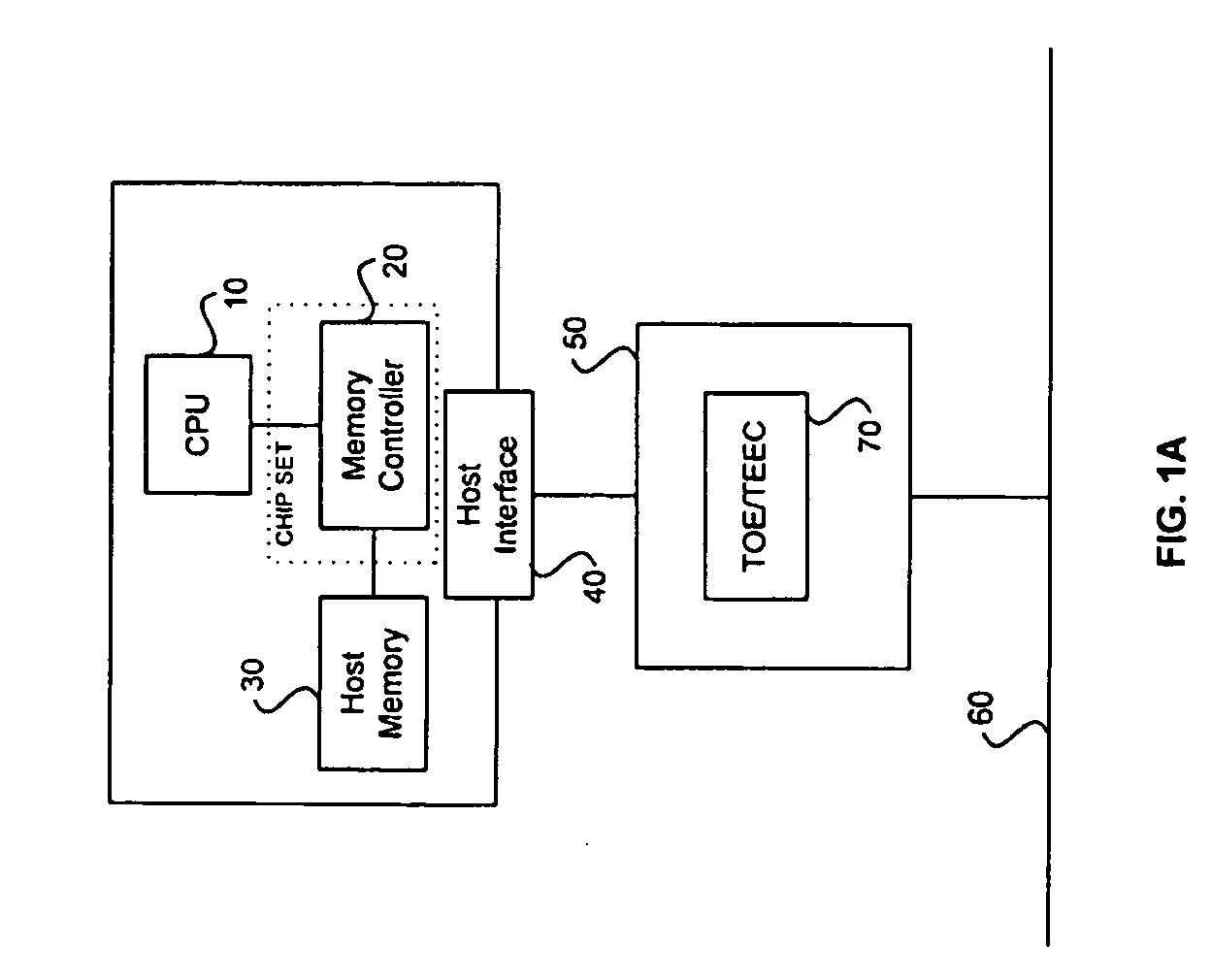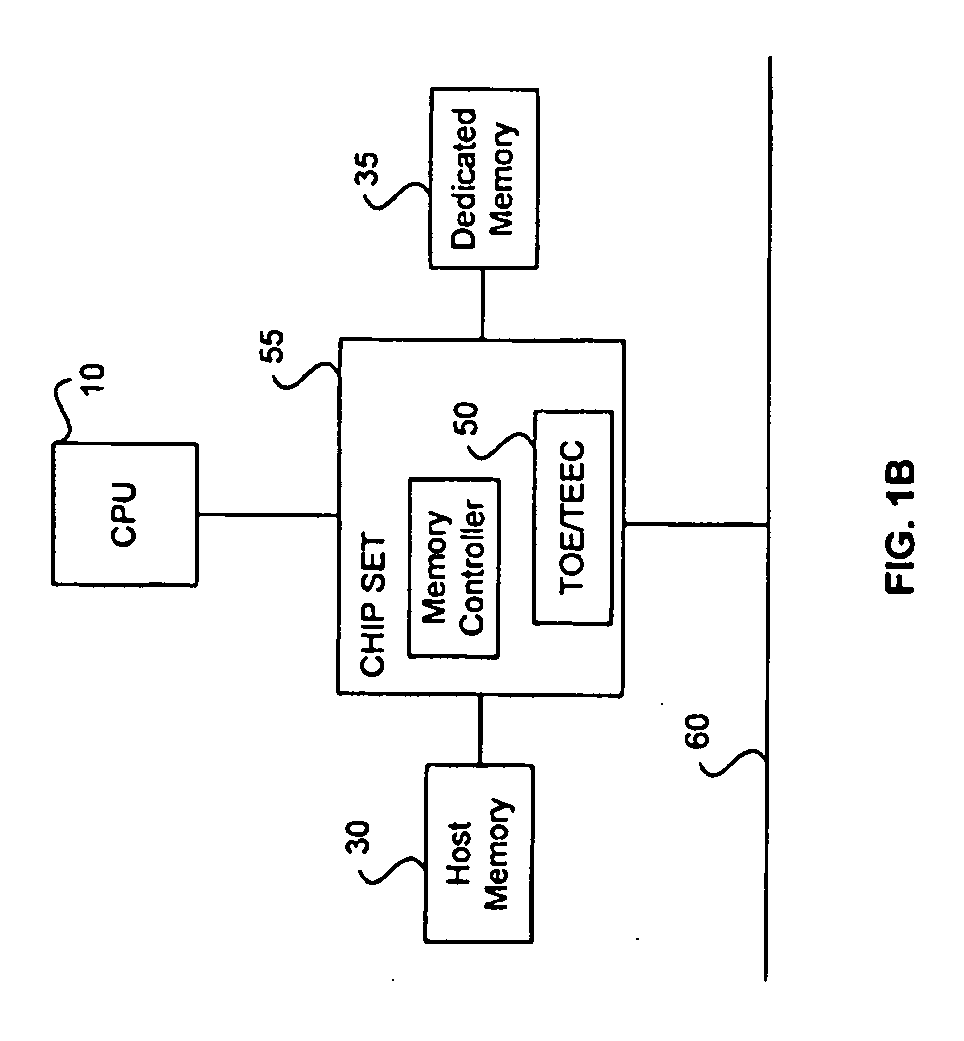System and method for handling out-of-order frames
a transmission control protocol and frame technology, applied in the field of transmission packet processing, segment or frame, can solve the problems of reducing effective throughput, utilizing additional bandwidth, and inefficiently handling out-of-order transmission control protocol (tcp) segmen
- Summary
- Abstract
- Description
- Claims
- Application Information
AI Technical Summary
Benefits of technology
Problems solved by technology
Method used
Image
Examples
Embodiment Construction
[0028]FIG. 1A is a block diagram of an exemplary system that may be utilized in connection with handling out-of-order frames in accordance with an embodiment of the invention. Accordingly, the system of FIG. 1A may be adapted to handle out-of-order (OOO) transmission control protocol (TCP) datagrams in a flow-through manner according to aspects of the invention. Referring to FIG. 1A, the system may include, for example, a CPU 10, a memory controller 20, a host memory 30, a host interface 40, network subsystem 50 and an Ethernet 60. The network subsystem 50 may include, for example, a TCP-enabled Ethernet Controller (TEEC) or a TCP offload engine (TOE) 70. The network subsystem 50 may include, for example, a network interface card (NIC). The host interface 40 may be, for example, a peripheral component interconnect (PCI) or another type of bus. The memory controller 30 may be coupled to the CPU 20, to the memory 30 and to the host interface 40. The host interface 40 may be coupled to...
PUM
 Login to View More
Login to View More Abstract
Description
Claims
Application Information
 Login to View More
Login to View More - R&D
- Intellectual Property
- Life Sciences
- Materials
- Tech Scout
- Unparalleled Data Quality
- Higher Quality Content
- 60% Fewer Hallucinations
Browse by: Latest US Patents, China's latest patents, Technical Efficacy Thesaurus, Application Domain, Technology Topic, Popular Technical Reports.
© 2025 PatSnap. All rights reserved.Legal|Privacy policy|Modern Slavery Act Transparency Statement|Sitemap|About US| Contact US: help@patsnap.com



